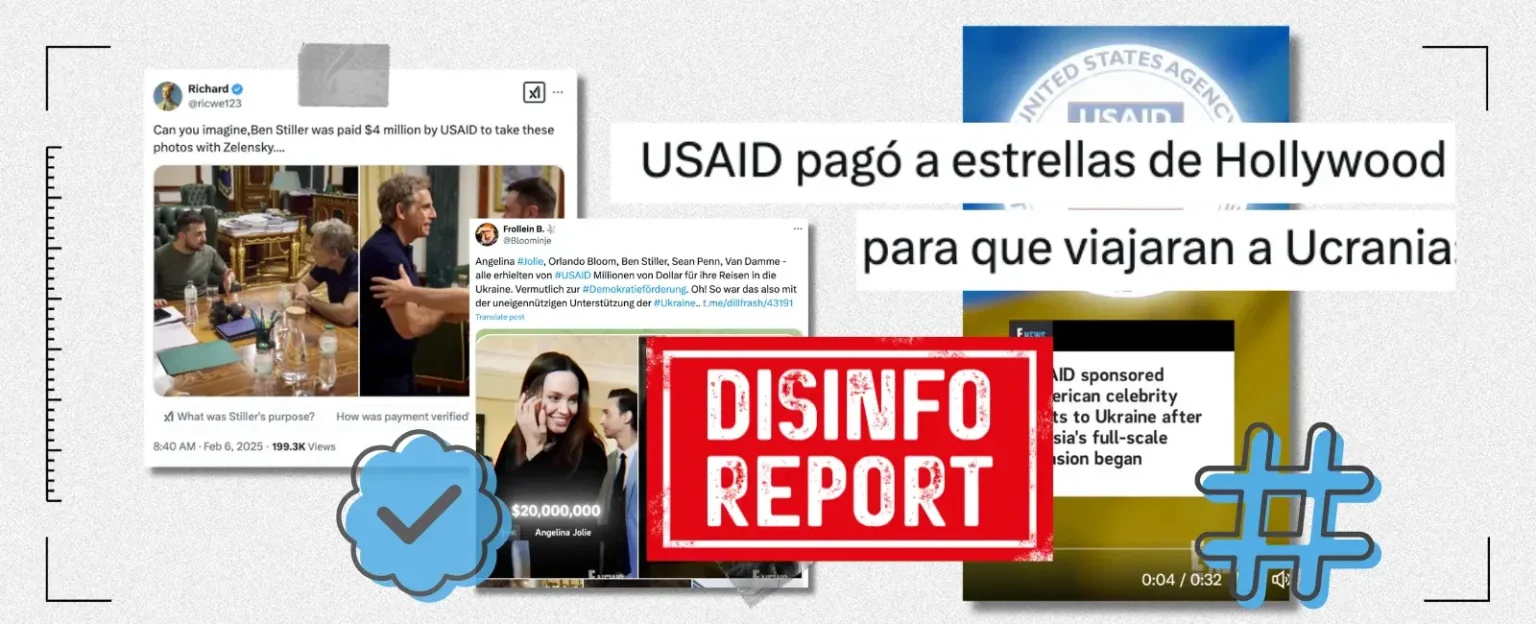A Disinformation Campaign Targeting USAID and Celebrity Visits to Ukraine Reaches Millions
A manipulated video falsely claiming that the United States Agency for International Development (USAID) funded celebrity visits to Ukraine has rapidly spread across social media platforms, amassing over 20 million views on X (formerly Twitter) in just three days. This disinformation campaign, active in at least nine languages, alleges that USAID paid prominent figures like Angelina Jolie, Ben Stiller, and Sean Penn to bolster Ukrainian President Volodymyr Zelenskyy’s image and influence US funding decisions. The video, falsely attributed to E! News, has been amplified by accounts linked to the Kremlin and pro-Russian propaganda outlets, further fueling the narrative’s reach.
The rapid dissemination of this disinformation underscores the vulnerability of online platforms to manipulation and the ease with which false narratives can gain traction. Analysis by Maldita.es reveals a coordinated effort to spread the video across multiple languages, with over 40 posts exceeding 5,000 views identified within a three-day period. The campaign exploited the reach of both individual accounts and established networks affiliated with pro-Russian narratives, leveraging their existing audience to propagate the false information. The video’s deceptive branding as an E! News report aimed to lend an air of credibility to the claims, exploiting the public’s trust in established media brands.
The targeted nature of this disinformation campaign raises concerns about its potential impact on public perception of humanitarian aid and international support for Ukraine. By falsely linking celebrity visits to financial incentives from USAID, the narrative seeks to undermine the legitimacy of these visits and cast doubt on the motives of both the celebrities and the US government. This disinformation campaign coincides with ongoing geopolitical tensions surrounding the conflict in Ukraine and appears designed to erode public trust in Western support for the country.
Despite the widespread dissemination of this disinformation, platform safeguards have proven insufficient to contain its spread. Maldita.es’ analysis reveals that only 14.3% of the analyzed posts had community notes flagging the content as disinformation. This highlights the limitations of relying solely on user-generated fact-checking systems, particularly in the face of rapidly spreading, multilingual campaigns. The lack of consensus among community note contributors often prevents the timely display of warnings, allowing false narratives to proliferate unchecked. This underscores the need for more robust platform moderation and proactive measures to identify and address disinformation campaigns before they gain significant traction.
The prevalence of the disinformation among users with paid verification badges (blue ticks) further complicates the issue. Over 60% of the analyzed posts originated from accounts with blue ticks, demonstrating how the paid verification system can be exploited to lend a veneer of credibility to false narratives. This blurring of lines between verified and unverified accounts poses a challenge for users seeking to discern credible information, as the blue tick no longer serves as a reliable indicator of authenticity. This highlights the need for platforms to reconsider their verification processes and implement more effective measures to prevent the misuse of verification badges for disinformation purposes.
The multilingual nature of this campaign underscores the global reach of disinformation and the importance of international collaboration in combating its spread. The video has been translated into at least nine languages, targeting diverse audiences and maximizing its potential impact. This coordinated effort across multiple languages requires a similarly coordinated response from fact-checkers, researchers, and platforms to effectively debunk the false narrative and limit its spread. International cooperation in sharing information and best practices for combating disinformation is crucial to addressing this growing global challenge. Further research is needed to understand the full extent of this campaign’s reach and its effectiveness in influencing public opinion.


